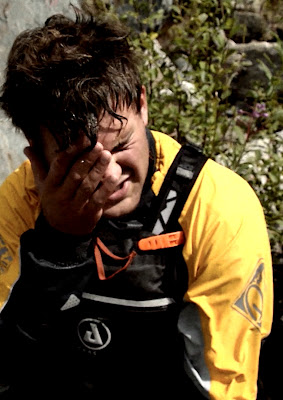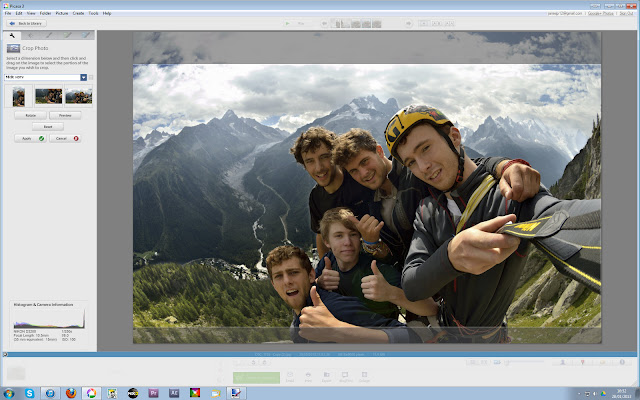Out of the pictures I posted about this image stood out as the most potent portrait due to it's emotion, relatability and obvious mise-en-scene to the common kayaker and mountaineer, making it ideal for the magazine cover.
With slight adjustments of exposure curves and the addition of artificial noise grain, the image looks gritty and powerful.
Here I am cropping the image to A4 (210x297) printing size to suit that of modern magazines.
 Applying the rule of thirds I have created two images here using the centre of Mike's head as the 1/3rd line cut off.
Applying the rule of thirds I have created two images here using the centre of Mike's head as the 1/3rd line cut off.Both of these images capture his expression well and are quite powerful. Relating to my 'lines and structure' post in August, the left image attracts you to his eyes at first, then his arm and hand on his face is noticed. The direction of his hand points into the exposed background which seems natural. The right image however 'cuts' this imaginary line off as the image is cropped. It makes the image appear somewhat awkward and out of balance. Whilst this effect can be useful, it seems almost too evident here.
As far as the magazine title is concerned, as there is no vertical space above Mike's head available. For this reason I had to experiment with other crops.
After some experimenting I decided to go with the diagonal-thirds crop. Whilst at first it may appear Mike's head is in the middle, it is actually slightly to the left. This subtle movement is sufficient to allow imaginary and concrete lines such as his line of sight (looking down and right) and his arm/hand (pointing up and right) to point towards the majority of the frame. This prevents the awkward feeling we experienced in the previous, right picture.
The diagonal thirds here involve the elbow on the left with a strip of background around it to help it stand out, his face (and his hand) and an entirely exposed background in the final third. With more open space now the title should be exposed enough to be recognisable. Although many modern magazines rely on the authority/power and popularity of their names to be recognised whilst their titles hide behind the subject.
Here is the cover before text has been put on. A nicely fitting, under-exposed area at the bottom of the frame will be used for text, as well as the side columns and the main title.



























